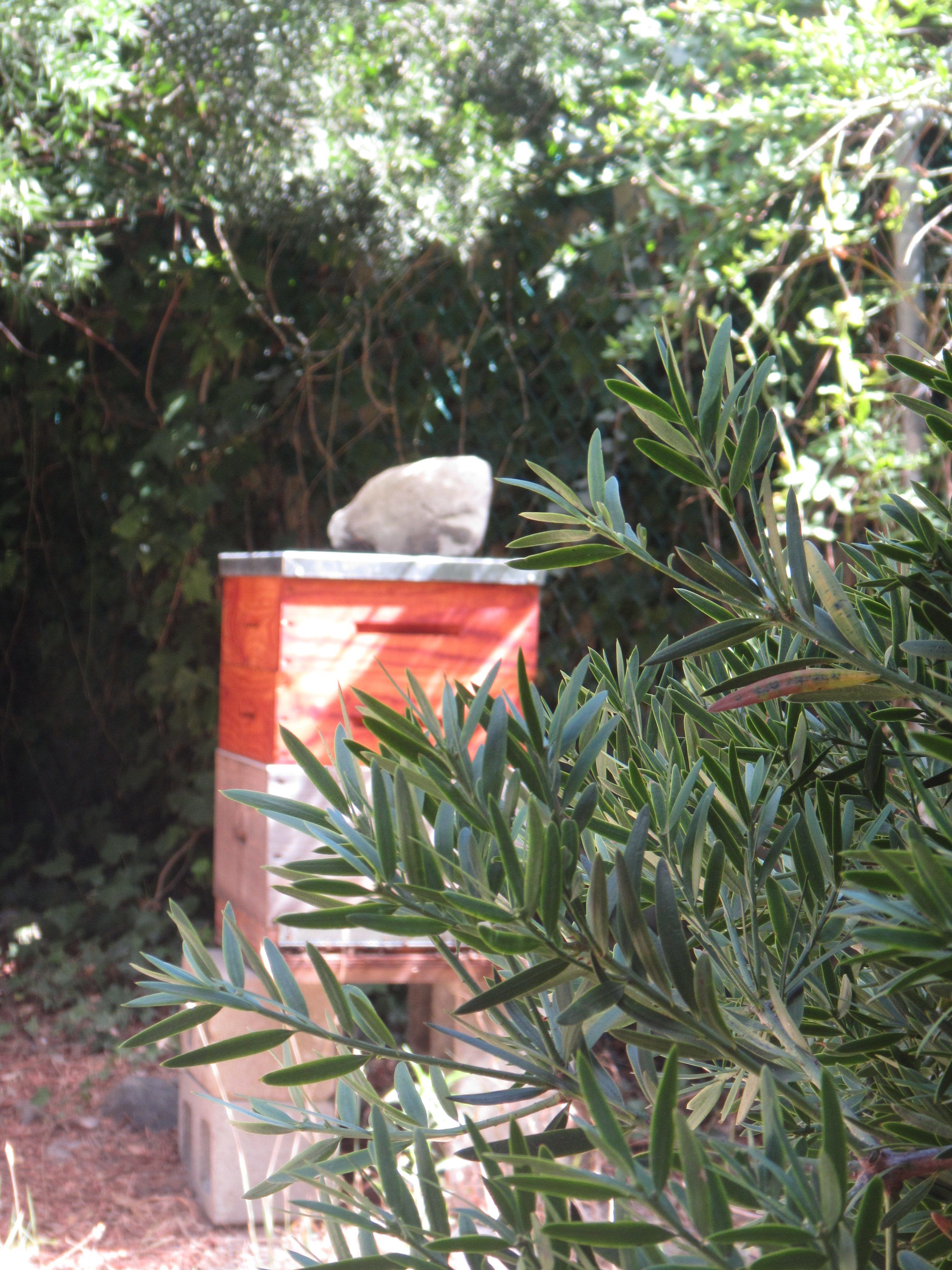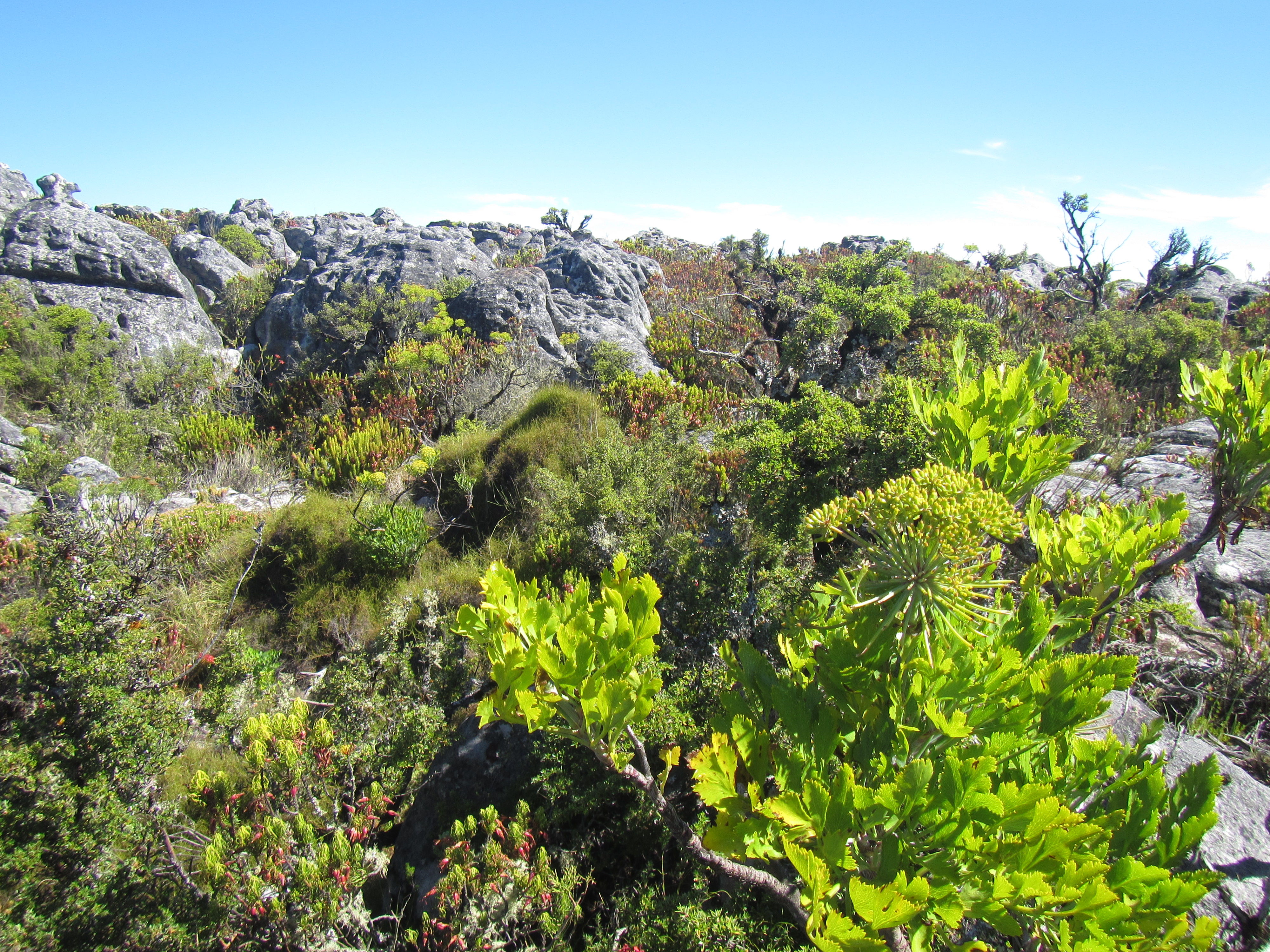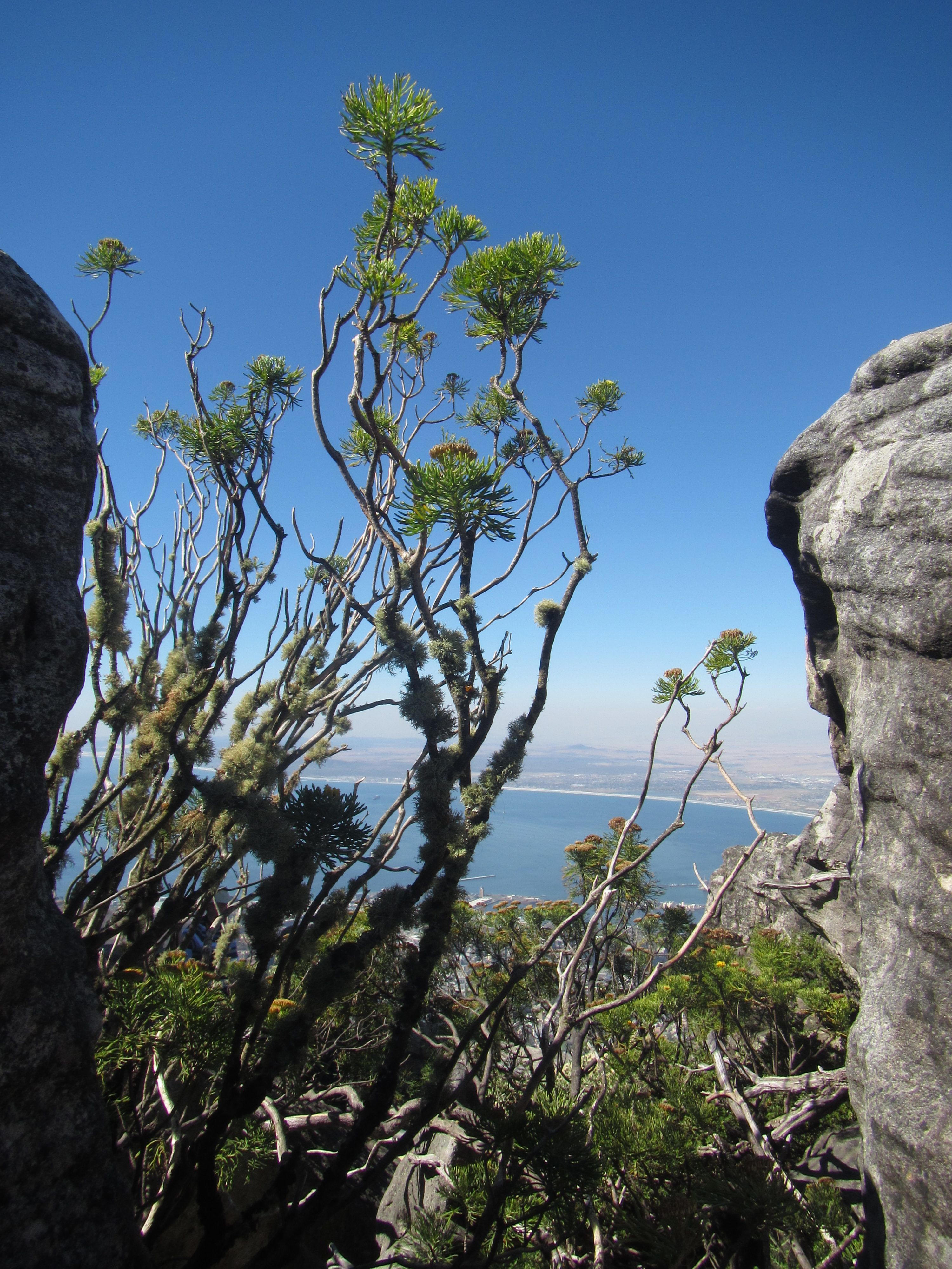
When I first tasted honey from South Africa my taste buds got all a ‘zinging’ and I wanted to know more about this area of the world and the unique bio diversity that serves those little African bees so well when foraging for nectar and pollinating. That’s when I learned about fynbos.
The word fynbos originates from the Dutch meaning fine leaved plants. The Cape Floral Kingdom covers 90,000. km and so holding the highest concentration of plant species (3% of worlds plant species and 20% of Africa’s) including 80% which is fynbos.
Suzanne Radford exploring honey and ingredients for me spoke with Adam Harrower botanist and horticulturalist based at the botanical gardens Kirstenbosh, Cape Town. A beekeeper hobbyist he explained the significance of fynbos and how he got into beekeeping.
 Describe the landscape?
Describe the landscape?
We are standing below the Eastern Slopes of Table Mountain and above Kirstenbosh. There are 2,500 species of plants here in the Cape peninsula including ericas (heather), proteas (sugarbush), buchu and daisies. Bees love harvesting pollen and nectar from these plants as well as honeydew and resin to use as propolis. Two thirds of the fynbos can only be found here in the Western Cape and no-where else in the world.
How did you get into bee keeping?
I was asked to provide some science and help edit the book Bee Plants of Southern Africa by M. F. Johannsmeier and this peaked my interest. Then a friend arrived one day with a jar of honey he produced from his bees and I thought that’s pretty cool. Another friend was studying the physiology of bees and how to prevent bee colonies from dwindling and that was it, I entered into it as a hobby and I now have ten hives and absolutely love it.

How did fynbos come to be here?
The land is ancient and hence more diverse. During the last ice-age the northern hemisphere glaciated and was wiped out. That didn’t happen here. Coming from sand stone and poor soil low in nutrients that plants need it has created amazing diversification because of its resilience. Its also fire driven and it regenerates after fire which we are prone to in this part of the world. Fynbos is mind ‘bogglingly’ rich in its flora and the 2,500 species found on the SW peninsula makes up half of Africa’s plants.
When does it flower?
It tends to grow in winter which is unusual as other plants tend to lay dormant and flower early and mid summer as there are more pollinators in the warm weather. The south west Cape is the smallest of floral kingdoms and is Mediterranean, not tropical, which is the case for other floral kingdoms.

One of Adam’s hives nestled in the plants

The silver tree, endemic to the Cape Peninsula.
How does your honey taste?
No batch is ever the same because there is so much for the bees to harvest. Its rich and complex and whilst most honey will have tones of eucalyptus as its so prevalent, here at Kirstenbosh its not so much and the bees love the protea bushes here, ericas and tree honey (daisy).
How much yield do you get?
I do a small harvest late summer around April and again in September and then a big harvest in Jan/Feb when I yield around 220 kg of beautiful, pure honey from the Cape.
Whats the biggest message you would like to share?
Create your own bio diversity in your gardens and keep local. One of the things we do at Kirstenbosh is trial plant using indigenous species to provide food for birds and bees rather than planting exotics they wont feed on. If we all plant and improve the flora around us we help keep bees alive and working contributing to a healthy eco-system.

Suzanne and Adam recording how the honey production process works for a Honey Explorer podcast coming your way soon.

The ariel cable car, Table Mountain, and at 1000 m above sea level you find alpine fynbos

The table top of Table Mountain

Fynbos vegetation close up on Table Mountain

View of the cape through alpine fynbos
Sign up for exclusive offers, recipes and the latest raw honey news.